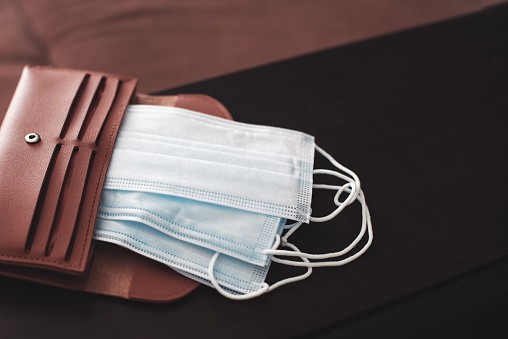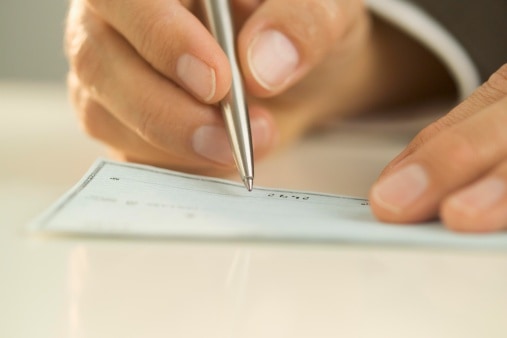You’ve worked at a power plant for over 10 years. You make great money and enjoy your job. Then, a notice from your manager states that the plant is closed until further notice due to COVID-19.
You know you must file for unemployment, but you don’t know where to start. Additionally, you have upcoming bills, rent due, and don’t even know if you’re eligible for unemployment benefits.
If you’ve worked for an extended period, you can file an employment claim. Most importantly, you can also apply if you’re out of work through no fault of your own.
Further, you must be ready to work at any time to qualify in your state. Some people who couldn’t be eligible for unemployment previously can now file. With that, the requirements depend on state guidelines.
This article will show you the current U.S. employment rate and what you can do to obtain an unemployment check. Keep reading to learn more.
What Is The Current Unemployment Rate?
The most current unemployment rate is over 14 percent. Moreover, experts predict that unemployment could run as high as 20 percent in the short-term. The unemployment level was 14.7 percent in April, with over 20 million jobs gone that same month.
Officials also claim a 20-percent jobless rate could occur in June. Such figures amount to the worst jobless rate since the Great Depression.
The Great Depression suffered a peak unemployment rate of 25 percent.
With that in mind, the rapid rate of jobless claims in recent weeks suggests that the U.S. will reach the higher end of unemployment projections.
Experts aren’t sure if the lost jobs disappeared entirely, or if they’ll return when the threat of COVID-19 passes. Overall, COVID-19 has cost the U.S. over 30 million jobs thus far.
Traditionally, the real unemployment levels (which includes those who have given up the job search) are much higher than the official numbers. Also, the number of people that cannot obtain unemployment due to overwhelming application volumes is currently unknown.
Am I Eligible For Unemployment?
The unemployment requirements in your state can vary, but you’ll qualify if you’re unemployed through no fault of your own. Additionally, you must meet general standards, such as:
- You cannot work due to a lack of jobs available
- You must be ready and willing to work
- You must have sufficient wages during a base period to file a claim
- You can also be partially unemployed to file a claim
The wages and time earned requirements depend on your state guidelines. That generally means that you’ve had a long-term job but lost it unexpectedly.
If an employer terminated your employment due to COVID-19, you could still file for unemployment. However, state mandates on terminated individuals are different.
- Example: If an employer terminated your employment in California, you could contact the Department of Labor to explain your circumstances.
With that, you’re unlikely to qualify for benefits if an employer fired you due to misconduct on your part. You can also file an appeal if the unemployment office denies your claim.
Moreover, you may have to meet additional requirements mandated by your state. However, federal guidelines have expanded the unemployment system to those who traditionally didn’t qualify for unemployment benefits.
- Example: Gig workers and self-employment individuals are eligible for unemployment claims.
Under the CARES Act, recipients can receive an additional $600 per week up to six months. The other weekly payment will last until July 31, 2020. Additionally, applicants can get an extra 13 weeks of benefits that stretch beyond the allotted state parameters.
Overall, the following types of people can file for unemployment benefits:
- Those who have suffered a layoff
- Those who have undergone a drastic cut in hours
- Those who are dealing with a furlough
In response to COVID-19, workers contending with permanent layoffs or temporary layoffs are eligible to file claims. People who are undergoing quarantine can also petition the states for benefits.
- Note: Even though federal guidelines apply, many states may not have updated their systems to reflect the new policies.
Further, you can also file if you want to work but cannot due to COVID-19 exposure. Additionally, you can also file if you’re caring for a family member who has the virus.
How Can I File For Unemployment?
To file for unemployment, contact the Department of Labor in your state to learn more about the program stipulations. Further, review your state’s insurance website to see what type of documentation you’ll need. Even though document requirements may differ based on state rules, you’ll generally need the following items:
- Social Security Number
- Driver’s license
- Primary mailing address
- Federal Employer Identification of your current employer
- Company names and employer names from the past two years (in addition to those from other states)
When filing a claim, you will most likely input general information, such as your address and employment date. Further, the system may ask additional questions, such as the option to withhold taxes from the unemployment payment.
- Note: The IRS considers your unemployment income taxable. Therefore, the state or federal government can withhold your benefits if you have a tax balance.
Also, the unemployment office may ask why you’re unemployed. They may also want to know if you’re entitled to holiday bonuses or vacation periods.
If your state allows direct deposit, have a check ready so that you can include your account information. In other cases, you may receive a state-issued unemployment card, in which case you’ll receive instructions on how to use the card. An unemployment card works in the same way as a debit card, allowing you to make purchases and withdraw money when necessary.
You will receive money in your account weekly so you can use your card to make purchases. In some states like Connecticut, you can choose between a debit card or direct deposit.
It’s important to keep in mind to file a claim in the state where you worked. If you worked in multiple states, the state where you currently reside could provide more information on the necessary filing procedures.
Depending on your state, you can file online or via telephone. You can also register in person, but the Labor Department may close or have limited hours in response to COVID-19.
Possible Meetings
In some cases, you may need to meet with a department rep regarding your job search. Some states may also require you to apply for a certain number of jobs each week. If you’re subject to minimum job search, bring any paperwork that documents your weekly job search.
- Note: The purpose of the meeting is to help you find another job.
Also, you may need to meet with an official to reapply for benefits if necessary.
How long does it take to get unemployment?
Without delays, it generally takes two to three weeks before you receive your first payment. With that, you may face delays due to the high volume of applications.
If you qualify as unemployed, you should file as quickly as possible. Recipients must generally deal with a week of non-payment before receiving the first payment. More than likely, you’ll face a waiting period before you can accept benefits. However, specific states have waived the waiting periods during these troubling times.
Avoid Scammers When Filing
It’s also worth noting the vast array of unemployment insurance scams, especially as more people file for state claims. You may come across a website that appears official, but really isn’t. Check that the website ends in .gov or call the phone number to see if it reaches the correct agency.
How To File For Unemployment Without Delay
Due to the unprecedented amount of unemployment applications in most states, you may face delays in the application process. If you’re making little headway during the application period, contact your unemployment office as many times as needed to get through. Being persistent may get your application through.
File your unemployment claim in the state where you currently work. You should also file in your current state if you worked in other states previously.
Although the states are dealing with many applications, the federal government has expanded the unemployment insurance program and made it easier for applicants to apply with fewer hurdles.



